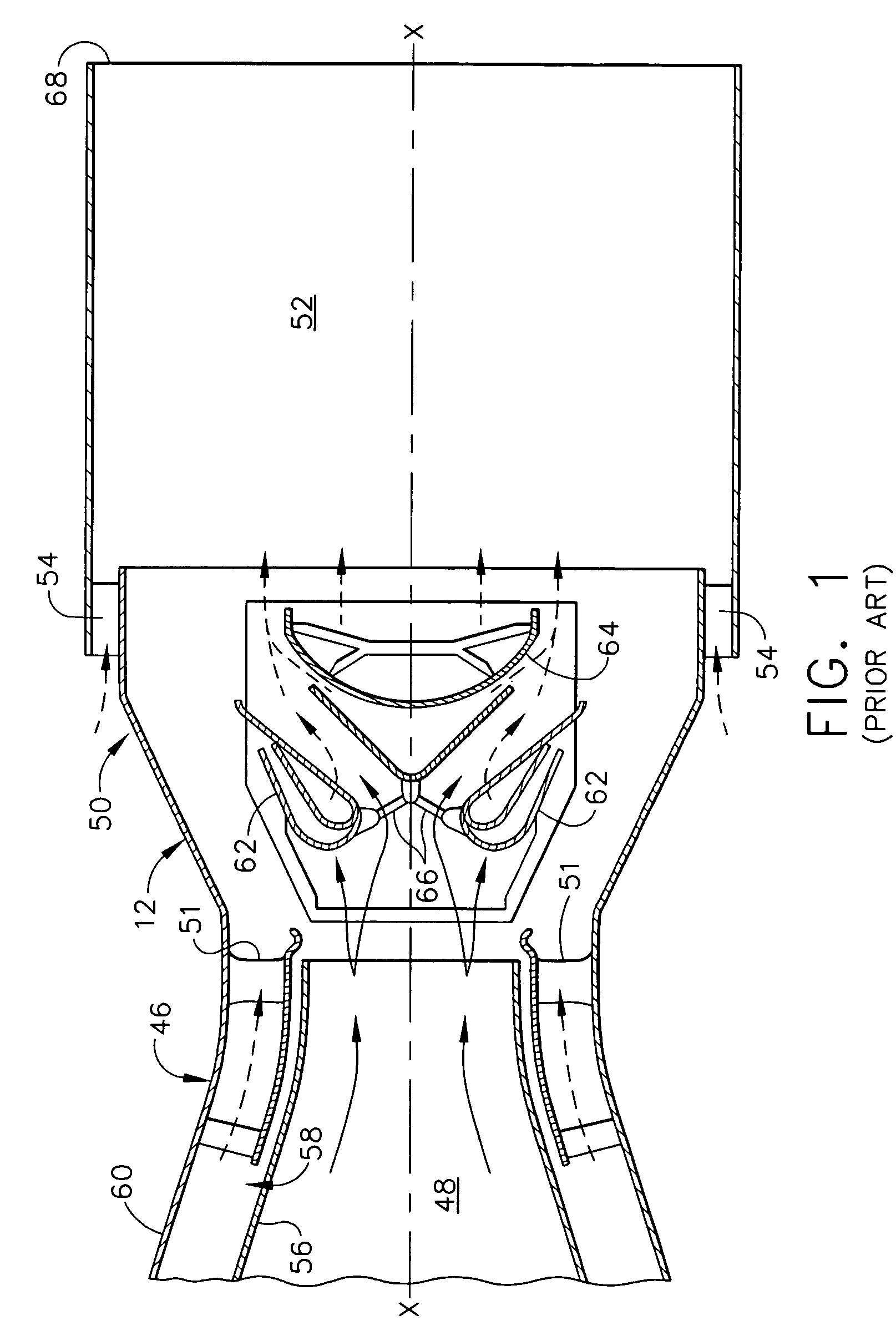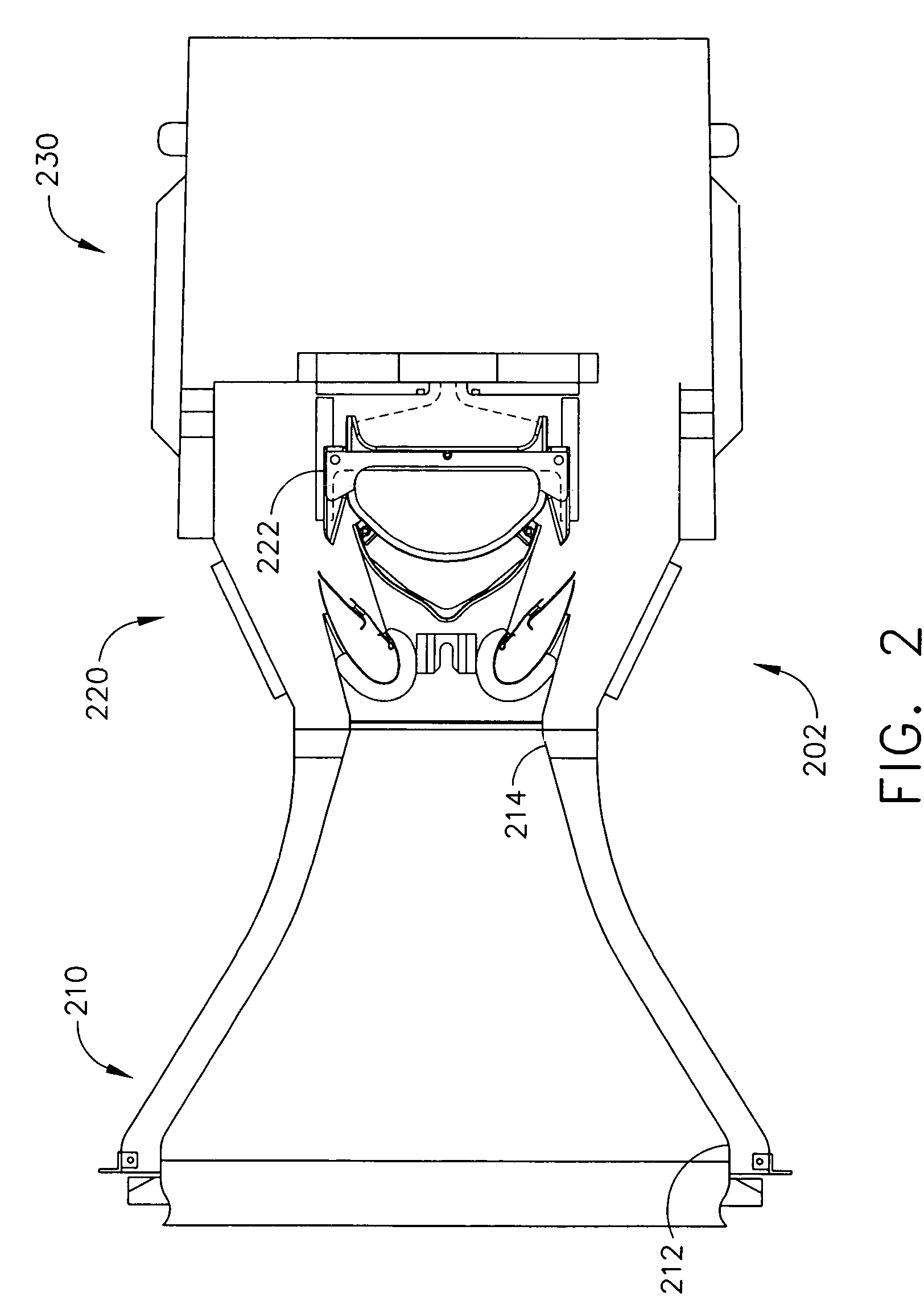High-emissivity infrared coating applications for use in HIRSS applications
a technology of infrared coating and high emissivity, which is applied in the direction of superimposed coating process, efficient propulsion technology, machines/engines, etc., can solve the problems of engine operating even with improved hirss systems becoming increasingly vulnerable, and achieve the effects of improving the ir performance of such engines, reducing or eliminating them, and improving the ir performance of materials
- Summary
- Abstract
- Description
- Claims
- Application Information
AI Technical Summary
Benefits of technology
Problems solved by technology
Method used
Image
Examples
Embodiment Construction
[0023]The present invention is directed for use on a gas turbine engine of the conventional turboshaft type, but its use is not so limited, and it may be used with other types of gas turbine engines such as turbofan and turboprop engines. FIG. 1 depicts a cross-sectional schematic view of a prior art infrared suppression system for use in a gas turbine engine of the conventional turboshaft type, such as the GE T-700, wherein the power turbine shaft may be connected to drive rotor blades of a helicopter. This infrared suppression system utilizes a mechanical arrangement of baffles to achieve the improvement in IR performance to mix hot and cool gases while eliminating line of sight IR so as to improve engine performance. The system achieve its improved IR performance without the use of Hi-E materials. While the system provided an acceptable solution for its time, the current infirmities with the system are discussed above. FIG. 1 is set forth fully in U.S. Pat. No. 6,253,540, ('540 P...
PUM
| Property | Measurement | Unit |
|---|---|---|
| emissivity | aaaaa | aaaaa |
| hemispherical reflectance | aaaaa | aaaaa |
| temperature | aaaaa | aaaaa |
Abstract
Description
Claims
Application Information
 Login to View More
Login to View More - R&D
- Intellectual Property
- Life Sciences
- Materials
- Tech Scout
- Unparalleled Data Quality
- Higher Quality Content
- 60% Fewer Hallucinations
Browse by: Latest US Patents, China's latest patents, Technical Efficacy Thesaurus, Application Domain, Technology Topic, Popular Technical Reports.
© 2025 PatSnap. All rights reserved.Legal|Privacy policy|Modern Slavery Act Transparency Statement|Sitemap|About US| Contact US: help@patsnap.com



